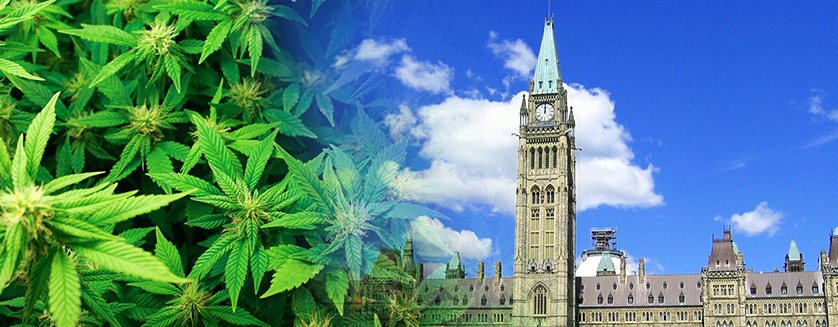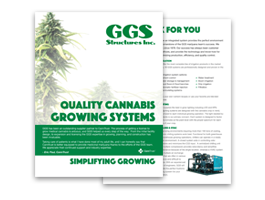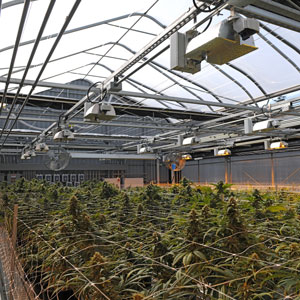A timeline of Canadian cannabis legalization
Justin Trudeau recently announced that recreational cannabis will finally be legal across Canada as of October 17th. This is a very exciting time for Canada as advocates and businesses around the world are watching. With just over three months to go until the official legalization date, we’ve created a timeline of cannabis legalization in Canada:
1800s – The Canadian government was using hemp to stimulate the economy. Canadian farmers were actually being given hemp seeds by the government with the intention that they would be cultivated for its many uses. The provincial parliament of Upper Canada was setting money aside specifically to incentivize farmer to cultivate hemp. By 1822, they began purchasing machinery for hemp processing.
1923 – The Canadian government introduced the Act to Prohibit Improper Use of Opium and other Drugs. The act was a consolidation of previous legislation that consisted of opium, morphine, cocaine and eucaine. Cannabis, heroin and codeine were added. The same year, cannabis was also added to the Confidential Restricted List under the Narcotics Drug Act amendment Bill.
1932 – This was the first time that Canadian law enforcement seized any marijuana
1960s – The counterculture movement during the 1960s saw an increase in psychedelic drug and cannabis use. Anti-cannabis laws were being strongly enforced and the amount of arrests and convictions increased dramatically.
1969 – The Royal Commission of inquiry in the Non-Medical Use of Drugs was formed by the Canadian Government to respond to the increased use of cannabis in Canada. The purpose of the commission was to research how the government could play a role in regulating drugs that were being used non-medically. They recommended that the penalties be scaled back and focus on medical management but the suggestions were never enacted.
1970s – The 70s were a very dark time for pro-cannabis advocates. Protests began to take place including what is known as the 1971 Gastown Riot in Vancouver. This was the first “smoke-in” that protested the strict Canadian laws around cannabis. Many protestors were beaten with a baton by police wearing full riot gear on horseback.
1997 – This is when the attitude toward marijuana really began to shift. Public opinion polls found that more and more Canadians began to agree with the statement “smoking marijuana should not be a criminal offence”.
2000 – The Ontario Court of Appeal ruled that cannabis probation was unconstitutional after Terrance Parker was arrested for possessing marijuana. Cannabis was the only thing that seemed to help Terrance with his epilepsy. He was arrested on multiple occasions and the Court of Appeal argued that limiting Terrance’s use of cannabis was a violation of his right to life, liberty and the security of his person.
2001 – Canada introduced the Marihuana Medical Access Regulations Act (MMAR) after the Canadian Court of Appeal declared prohibiting the use of marijuana for medical use unconstitutional. The MMAR allowed patients to possess dried flower/bud with a government issued license, signed off by a physician. This made Canada the first country to legalize cannabis for medical use.
2003 – Canada introduced a measure to reduce the penalties for possession of up to 15 grams to a civil fine but thanks to pressure from the U.S. Drug Enforcement Administration, the measure was not enacted.
2006 – Prime Minister Stephen Harper introduced mandatory prison sentences for dealers and growers. Two year prison sentences were given to growers with 500 or more plants. The maximum sentence was increased to 14 years which was double the previous sentence of seven years.
2014 – The Marihuana for Medical Purposes Regulations (MMPR) replaced the MMAR. Medical cannabis could be prescribed by a physician and a government license was no longer required.
2015 – The current Prime Minister, Justin Trudeau, led the Liberal Part to a majority government victory. This was a huge victory for many cannabis advocates as a major point of his campaign platform was to legalize recreational cannabis.
2016 – A national poll found that 7 in 10 Canadians were in favor of legalization and the Canadian government was working diligently to complete the final wording of the legislation.
2017 – Bill C-45 was introduced to parliament on April 13th. The bill would have legalized cannabis by July 1st, 2018 and would allow recreational use for anyone 18 and older and possession of up to 30 grams.
2018 – Bill C-45 was approved by the Senate in principal on March 22nd. The bill underwent further reviews by other committees. On June 20th, the Prime Minister announced that cannabis would be officially legalized on October 17th.








